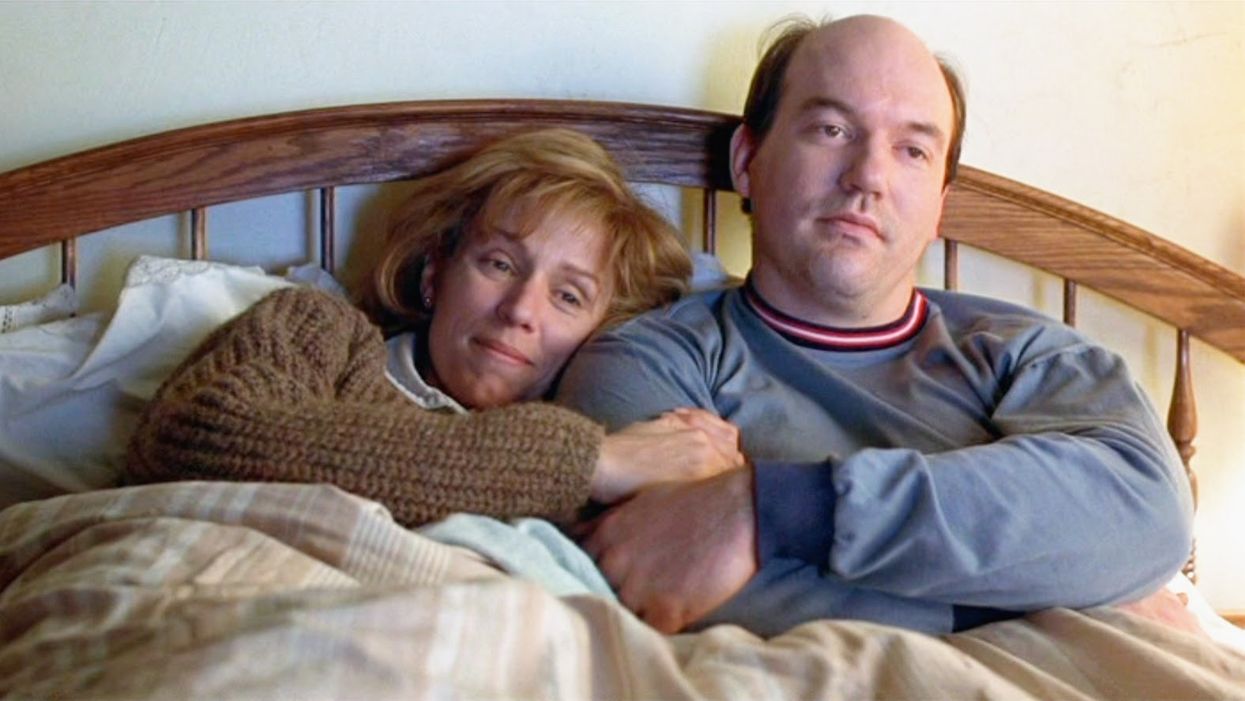Watch: Why the Restrained Framing of 'Fargo' is the Key to its Storytelling
The Coen Brothers designed Fargo to make the "uninteresting" interesting.

Of course, Fargo, the Coen Bros.' 1996 Minnesota noir, is anything but uninteresting, but in choosing to tell a story of the darkness of the human heart (something at which the directors excel) through the lens of proudly boring people (the film's hero, Marge Gunderson, goes through almost the entire film pregnant and happily domesticated), they faced an interesting aesthetic challenge.
"Everything we need to know about the relationships of these characters is told through the framing."
Even the man whose greed and desperation sets the whole calamity into motion, William H. Macy's Jerry Lundegaard, maintains, almost throughout the film, an unflappable cheer (at least on his face), and this emotional valence is matched by the white-out conditions of the film's locations; almost every time the camera is outside, the characters are set against a backdrop of snow, snow, snow. So how did they maintain visual interest? This video essay from Channel Criswell argues that it's all in the framing, which tells as much of the story as the dialog does.
According to essayist Lewis Bond, "Fargo's original storyboarding process only included the use of static shots an approach, which was logistically unachievable, yet this method gives us an insight as to how the inertia of the story would impact its cinematic techniques."
Roger Deakins, the film's legendary cinematographer, once said that framing was the most important aspect of what he does, and in this film, especially, as Bond puts it, "everything we need to know about the relationships of these characters is told through the framing."
Consider the scene above, and look at how Macy is framed as he tries to keep his world from imploding in around him. This is a man who has spent his entire life playing by the rules, being nice, and even now, in his hour of criminal malfeasance, he's still keeping up the pretense of being a straight arrow, through the vertical lines in the frame (reminiscent of prison bars, too) are starting to cut him into pieces.
And notice how, in the above shot, when Macy comes home to discover that the kidnapping plot he has set into motion has begun, he is filmed with a telephoto lens, which has the effect of flattening the perspective and alienating Jerry against the scene; he is very much alone.
Contrast that with this clip of Norm and Marge, above. Marge's relationship with her husband is presented as a contrast to that of Jerry and his wife (and Jerry and everyone around him, really.) But where Jerry is set off, apart, alone, in the above scene, Marge and Norm never leave the same frame, even when she walks out of the house. That's a testament to very careful design, and a telling example of how the Coen Bros. are, above all, cinematic directors—they plan their films as visual experiences.
Watch the rest of this essay for a great look into some of the other ways that Bond shows the Coen's (and Deakins') mastery of the visual, and how they used their skills to tell this story of good manners and bad decisions.
Source: Channel Criswell











